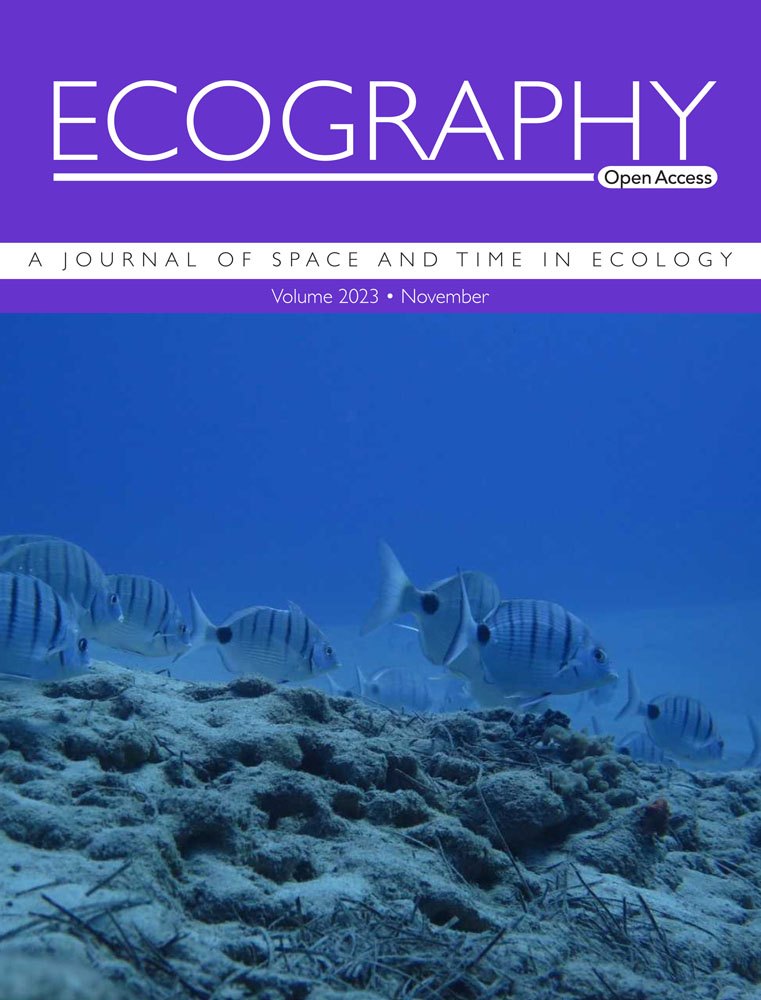How many trees are there in the North American boreal forest?
IF 5.4
1区 环境科学与生态学
Q1 BIODIVERSITY CONSERVATION
引用次数: 0
Abstract
Boreal forests, the largest terrestrial biome on Earth, are highly varied in local tree density. Despite previous attempts to estimate tree density in boreal forests, the accuracy of the estimation is unknown, leaving the question how many trees there are in boreal forests largely unanswered. Here, we compiled tree density data from 4367 plots in North American boreal forest and developed tree height‐based generalized linear and machine learning models to address this question. We further produced the current boreal tree density map of North America, and projected tree density distribution in 2050 under the shared socioeconomic pathways (SSP) 126, 245 and 585 climate change scenarios. Our best‐performed and cross‐validated random forest model estimated a total of 277.2 (± 137.7 SD) billion trees in the North American boreal forest, 31.3% higher than the previously estimated 211.2 billion. Our projected tree density distributions in 2050 showed at least 11% increase in tree density in the region. This study improves our knowledge about boreal tree density and contributes to understanding the role of boreal forests in regulating forest ecosystem functions and informing adaptation and mitigation policy‐making. The projected warming‐induced increase in tree density suggests the potential of the North American boreal forest for carbon sequestration.北美北方森林里有多少棵树?
北方森林是地球上最大的陆地生物群落,当地树木密度变化很大。尽管以前曾试图估计北方森林的树木密度,但估计的准确性尚不清楚,这使得北方森林中有多少棵树的问题在很大程度上没有答案。在这里,我们收集了北美北方针叶林4367个样地的树木密度数据,并开发了基于树木高度的广义线性和机器学习模型来解决这个问题。我们进一步绘制了当前北美北方森林树木密度图,并在共同社会经济路径(SSP) 126、245和585气候变化情景下预测了2050年的树木密度分布。我们的最佳表现和交叉验证的随机森林模型估计北美北方针叶林共有277.2(±137.7 SD)亿棵树,比之前估计的2112亿棵高出31.3%。我们对2050年树木密度分布的预测显示,该地区的树木密度至少增加了11%。这项研究提高了我们对北方森林树木密度的认识,有助于理解北方森林在调节森林生态系统功能以及为适应和减缓政策制定提供信息方面的作用。预估的变暖引起的树木密度增加表明北美北方森林具有固碳的潜力。
本文章由计算机程序翻译,如有差异,请以英文原文为准。
求助全文
约1分钟内获得全文
求助全文
来源期刊

Ecography
环境科学-生态学
CiteScore
11.60
自引率
3.40%
发文量
122
审稿时长
8-16 weeks
期刊介绍:
ECOGRAPHY publishes exciting, novel, and important articles that significantly advance understanding of ecological or biodiversity patterns in space or time. Papers focusing on conservation or restoration are welcomed, provided they are anchored in ecological theory and convey a general message that goes beyond a single case study. We encourage papers that seek advancing the field through the development and testing of theory or methodology, or by proposing new tools for analysis or interpretation of ecological phenomena. Manuscripts are expected to address general principles in ecology, though they may do so using a specific model system if they adequately frame the problem relative to a generalized ecological question or problem.
Purely descriptive papers are considered only if breaking new ground and/or describing patterns seldom explored. Studies focused on a single species or single location are generally discouraged unless they make a significant contribution to advancing general theory or understanding of biodiversity patterns and processes. Manuscripts merely confirming or marginally extending results of previous work are unlikely to be considered in Ecography.
Papers are judged by virtue of their originality, appeal to general interest, and their contribution to new developments in studies of spatial and temporal ecological patterns. There are no biases with regard to taxon, biome, or biogeographical area.
 求助内容:
求助内容: 应助结果提醒方式:
应助结果提醒方式:


